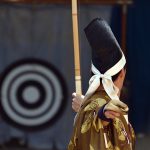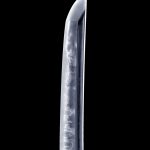Thanks to the modern computer-aided sewing machines, it has become very easy to have our name embroidered on our Gi or Hakama. It is decorative and useful (for example: it is certainly easier to retrieve our own stuff、 in case all our clothes get mixed up in a sudden tornado that invests our Dojo dressing room).
Surely the first idea is to write the name in Japanese, since we all so admire Japanese culture that we picked up a Japanese martial art and possibly cultivate some other Japanese hobby, from origami to Ikebana. We like the writing to be in Japanese because in case we meet our all-important sensei, we wish he/she could read and remember our name. We wish to be recognizable when we wear the Bogu, and it is only good manners to let other know who we are when we go for Keiko. Having our name written on our ‘Nafuda’ or our clothing has become the norm.
Then comes the moment to ask you favorite Boguya to suggest the transliteration of our name into Japanese. That is the tricky moment.
I know a very smart lady from
Whenever the name is less literal, as in the case of Koos, Matthew or Filippo, the solution is obviously to resort to the sound , not the meaning of the name. Then, to be very, very blunt, I STRONGLY advise to choose KATAKANA.
Yes, Kanji are exotic and fascinating in their flowing shape – but it has be reminded that Kanji can be ambiguous in sound (the “On” vs. “Kun” pronunciation), not helping our Sensei to fully grasp our name, but they also carry a meaning. It could be embarrassing to have our name transliterated in three beautiful characters that could sound more or less as our name, but that also mean “Lazy Donkey in the Sun”.
Katakana, thankfully, have only sound and no hidden meaning. They are syllabic characters, just a different form of alphabet.
Katakana have their challenges, too. The Japanese pronunciation has difficulty with R’s and L’s, with B’s and V’s…and has absolute horror of consonants not immediately followed by vowels. The only way to write my friend Fleur`s name in Katakana is フレル which accounts to FURERU. A Japanese speaker would read it at such and once informed about the European pronunciation, would certainly adapt his reading. This to say that even Katakana writing is not an exact science. We have to accept a degree of approximation. Do say this to me, with all the double consonants that are often typical of Italian names.
So, next time you are in doubt about how to write your name in Japanese, to be sure, go for katakana and be certain to introduce yourself clearly and slowly to your all-important Japanese Sensei.
Article written by Donatella Castelli







